Reviews
Art Stars Trek to Nepal for the First Kathmandu Trienniale, Promoting Regional Solidarity
'As much as the western biennials have somewhat lost their reason to be, the smaller biennials still make a lot of sense,' said Francis Alÿs.

'As much as the western biennials have somewhat lost their reason to be, the smaller biennials still make a lot of sense,' said Francis Alÿs.

Skye Arundhati Thomas

The first edition of the Kathmandu Triennale, curated by Philippe Van Cauteren, director of S.M.A.K Museum for Contemporary Art, opened this past weekend amid a slow tourist season in Nepal.
Still recovering from the earthquake of 2015, Kathmandu is yet in the process of rebuilding itself, and the Triennale seems to be aware of its potential to achieve more with smaller gestures. Thus, to visit is not to witness pageantry or diverse confluence, but instead to see the strong, first step of an emergent contemporary art scene. “For me, Kathmandu is the first artist of the show, the protagonist of the exhibition,” Van Cauteren told artnet News.

A fabric work on display at the Patan Museum by young Nepali artist, Sunita Maharjan, Untitled (2017). Photo Courtesy: Kathmandu Triennial.
Formerly known as the Kathmandu International Arts Festival (KIAF), of which two editions (2009, 2012) took place as a string of simultaneous events, the newly inaugurated Triennale puts on a single show curated under the title “The City / My Studio, The City / My Life.”
Unlike previous iterations of KIAF, Van Cauteren gave instructions that the participating artists were only to “bring over what could fit in their pockets,” a decision by which the two-week-long event has circumvented the logistical hurdles and requirements of a triennial, all the while considering the fragile economy and infrastructure of Kathmandu.
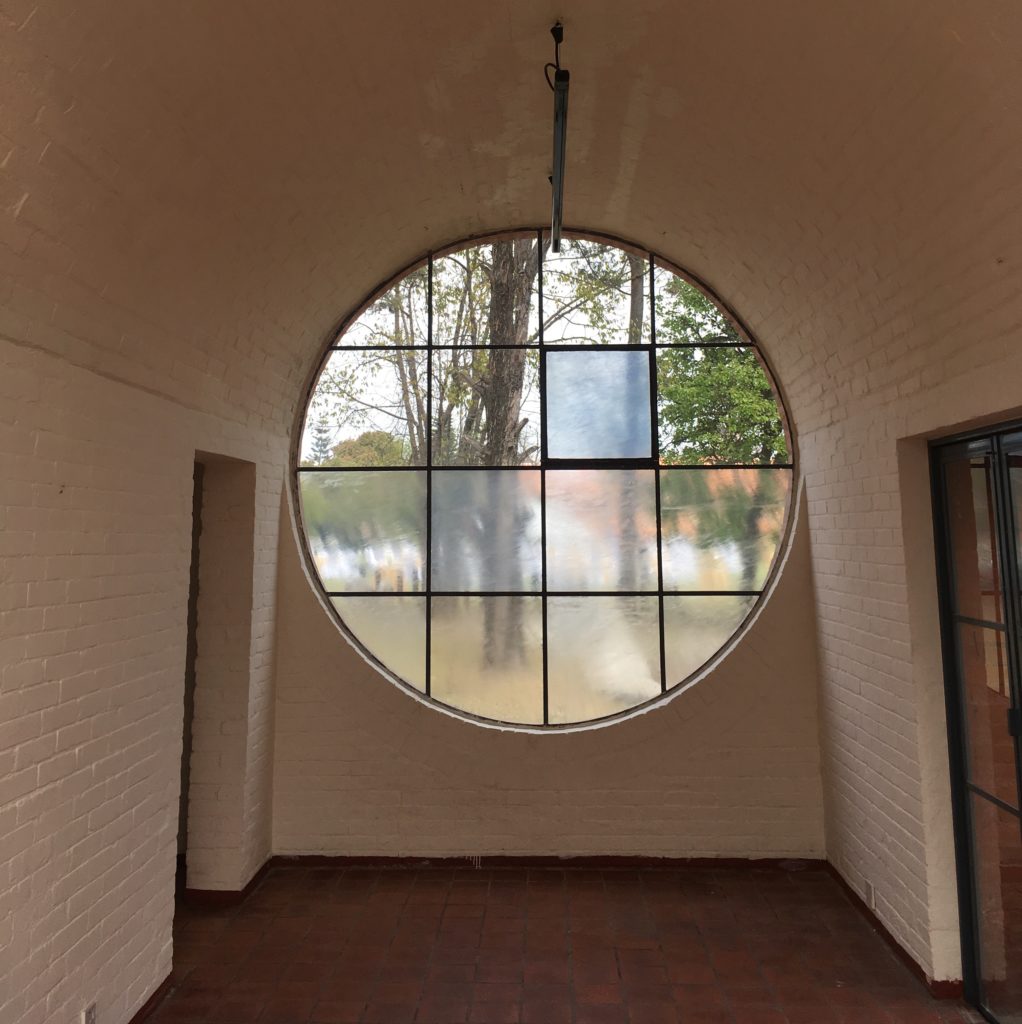
Lee Kit, Untitled (2017) at the Taragaon Museum. Photo: Skye Arundhati Thomas.
As a result, a lot of the work is site-specific, conceptual, and often composed of a series of subtle actions, interactions, and manipulations. Such is evident in the work of Chinese artist Lee Kit, who, responding directly to space as a canvas, created an installation of painted windowpanes and two small acrylic panels inside of the modernist Taragaon Museum, an architectural masterpiece designed by Carl Pruscha in the late 1950s. American artist Peter Downsbrough has laid out his signature black-and-white “word tiles” along the spaces of the same complex, a quiet and poetic work.
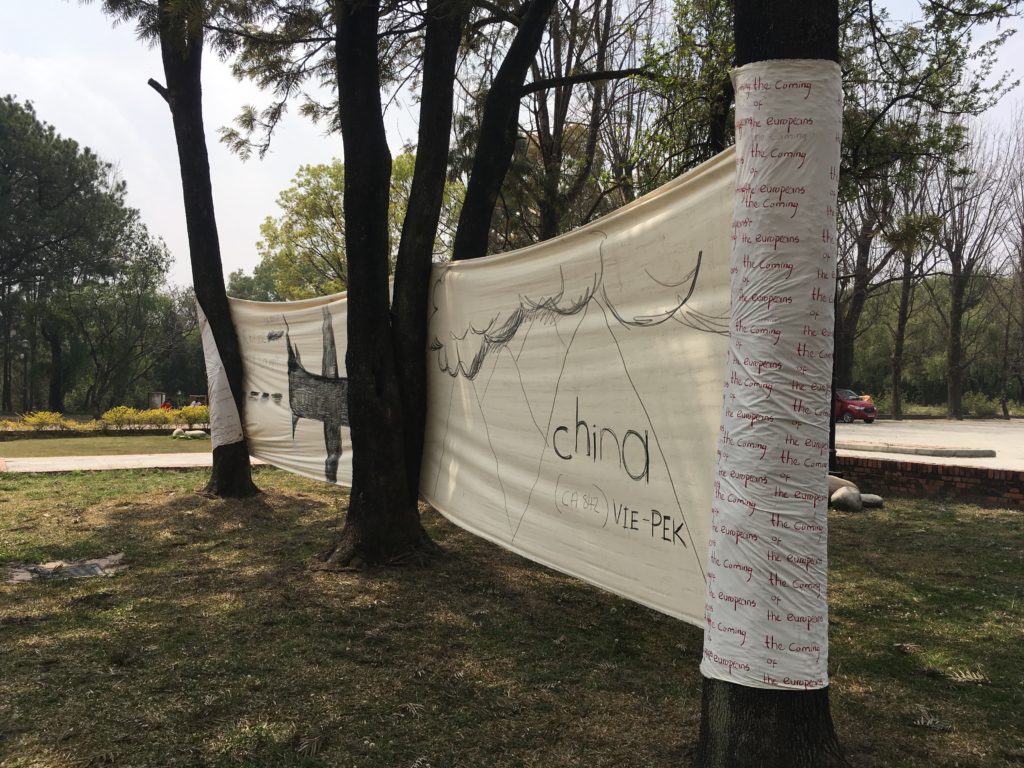
Oscar Murillo, The Europeans are Coming, (2017) on display at the Taragaon Museum. Photo: Skye Arundhati Thomas.
An Oscar Murillo flag titled The Europeans are Coming hangs bright and wide across the museum’s garden, drawing to attention the participation of primarily European artists and curatorial team. Indian artist Mithu Sen has left behind a room full of badges with names of local artists that are otherwise absent from the triennial.
The organizers are aware of this criticism, but present the decision as a tactical one. Van Cauteren, and the team from S.M.A.K, have brought over expertise that has helped realize the potential to produce work in Nepal. Huge display areas, used in previous iterations of the KIAF, were lost in the earthquake, including the Nepal Academy of Fine Arts. The Patan Museum, at the entrance of which sits a contemplative Ricardo Brey work titled Dust Bathing, has suffered damage too, and is set to be dismantled and rebuilt after the Triennale is over.
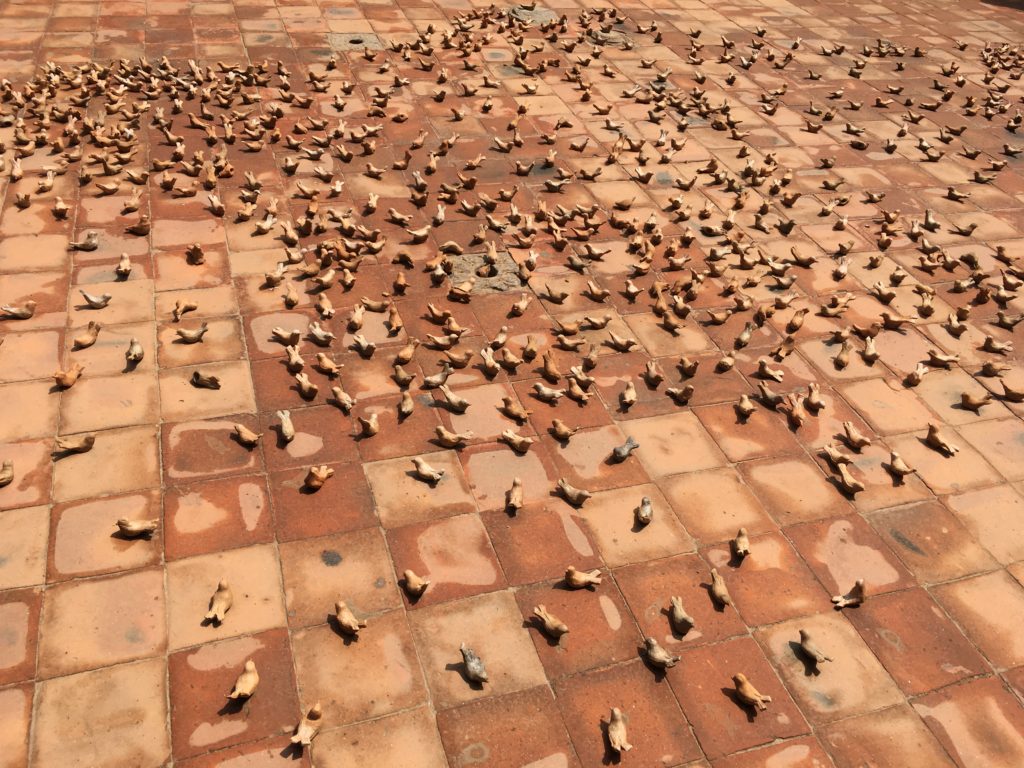
Ricardo Brey, Dust Bathing (2017) on display at the main courtyard of the Patan Museum. Photo: Skye Arundhati Thomas.
“As much as the western biennials have somewhat lost their reason to be, the smaller biennials still make a lot of sense in the way that they bring together international artists and open up a conversation with a local art scene,” artist and patron for this edition, Francis Alÿs told artnet News.
“I remember participating in the Biennales in Peru and in Cuba in the 1990s, and they were turning points in my practice and my career.”
Alÿs’s seminal film Sometimes Making Something Leads to Nothing (1997) is on display at the Nepal Art Council. In the film, Alÿs pushes a large block of ice along the streets of Mexico City for over nine hours, until all that is left is a thin wafer. The film lends itself to the critical framework of the event, as a testament to the importance of a slow and process-based movement through a city and its diverse urban scapes.

A still from Francis Alÿs’s film, Sometimes Making Something Leads to Nothing (Mexico City, 1997) Paradox of Praxis 1. Photo Courtesy: Francis Alÿs.
Van Cauteren elucidates how Nepal’s art scene is still fragile, caught between “the notion of tradition, which has a heavy weight, and the notion of contemporaneity.” Yet some of the strongest works on display are those made by young Nepali artists, who engage with this chasm to broach issues ranging from family histories, archival material, the modernization of traditional art techniques, and the earthquake, to name a few.
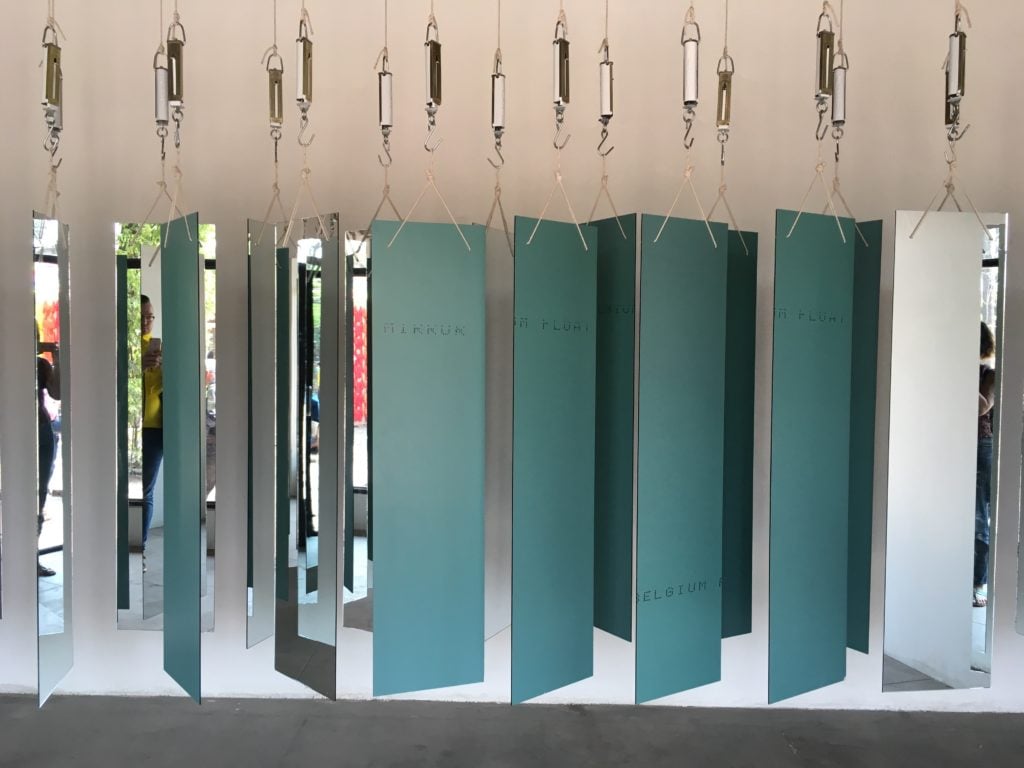
Leonardiansyah Allenda, Alter Numbers (2017). Photo: Skye Arundhati Thomas.
Such is the case with the work of artist Karan Shrestha, with an installation titled Everything at the Centre is a Little Off. Comprised of film, sculpture; and illustrations, Shrestha draws to attention the sociopolitical situation in Kathmandu. Artist Kunjan Tamang presents a small canvas with a composition of stilts made from staples, a familiar structure as most old buildings in Kathmandu are propped up on similar scaffolding. Artists from across the region, too, have produced engaging works, such as Indonesian artist Leonardiansyah Allenda (previously shown in the Jakarta Biennale) with an installation of slow-turning mirrors balanced precariously upon scales.
Indeed, a striking quality of the Kathmandu Triennale is the way in which it represents a cultural solidarity between neighboring countries of the region, with artists from Bangladesh, China, India, and Pakistan.
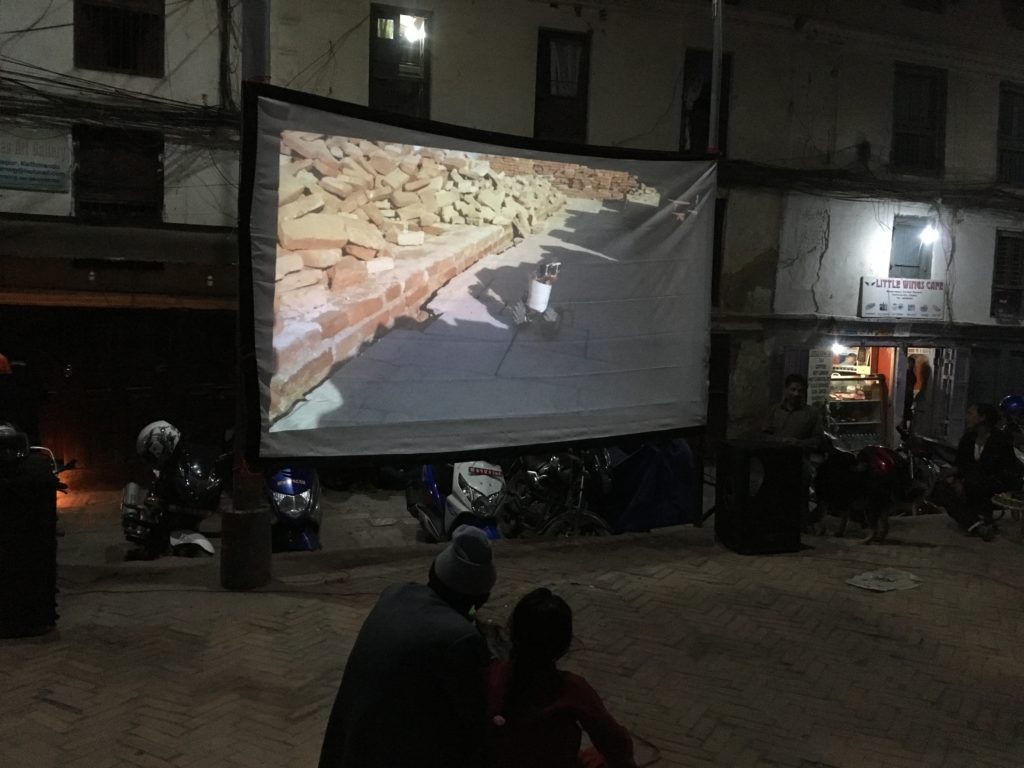
A public screening of Michael Candy’s film, Ether Antenna (2017). Photo: Skye Arundhati Thomas.
The opening day drew in a large local audience that visibly enjoyed interactive pieces, and could be seen curiously walking through a show with a format that is not customary to Nepal.
Although the prices of works are yet to be decided, estimates suggest a rather broad spectrum, with local artists’ work ranging from $5,000 to $10,000, and the international heavyweights, such as Murillo, being priced between $80,000 to $300,000. Indian artist Shilpa Gupta is showing two copper wire works that are priced between $25,000 to $50,000.
While the Triennale has a long way to go, and could certainly do more for its local engagement, it must be celebrated for its achievements. The Nepali economy is fragile at best, laden with accusations of political corruption and poor public infrastructure, worsened after the earthquake. The Siddhartha Arts Foundation, which single-handedly runs the operation, received no public funding and very minimal help from the Tourism Board. It is a significant first step, and hopefully one that breeds more for the region.
As for what’s to come in the coming two weeks, with Chinese artist Cai Guo-Qiang having just arrived—last seen plotting away with a team of specialists and technicians—Kathmandu can look forward to his hotly anticipated performance on March 29, sure to be explosive.
The Kathmandu Triennale runs from March 24 – April 9, 2017.